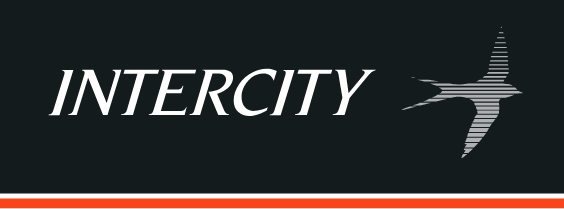

 General Enquiries 0800 038 5364
PLAN YOUR JOURNEY
General Enquiries 0800 038 5364
PLAN YOUR JOURNEY




Reserved seating is arranged at tables of four or tables of two with additional legroom, wide seats, plug sockets and panoramic windows. A buffet bar is available for the purchase of hot & cold beverages, light refreshments, and alcoholic drinks.
Our team of expert craftsmen worked tirelessly to refurbish our fleet of carriages inside and out. The train has been upgraded to the highest standards and liveried with the iconic Intercity brand. All our carriages have cushioned seating, panoramic windows, generously sized tables, and plenty of room for you to sit back, stretch your legs and admire the view from your window.

And relax… Our First-Class seats are cushioned and comfortable, seated around tables with glorious views through the picture windows. All you need to do it sit, chat, admire the scenery…


Make the most of your journey with a visit to our Intercity buffet bar, serving freshly made snacks and light refreshments, tea, coffee and soft drinks. Our fully licensed bar stocks a selection of bitter, lager, cider, wines and spirits for you to enjoy.
English Electric Class 20 locomotives are famous for working together as a pair, usually coupled ‘nose to nose.’ 228 locomotives were built in total between 1957 and 1968 to Type 1 specification, designed to primarily haul mixed freight traffic. Our 75mph maximum speed diesel locomotives, painted in BR Green livery, weigh 73 tonnes each.


Constructed by English Electric at Newton-le-Willows or Robert Stephenson & Hawthorns at Darlington between 1960 and 1966, Class 37s are affectionately nicknamed ‘Tractors’ by enthusiasts due to their distinctive agricultural engine sound. 309 locomotives were built in total with a maximum speed of 80mph and were designed for both passenger and freight work.
Known by enthusiasts as ‘whistlers’ because of the distinctive sound of their turbochargers, 200 Class 40 locomotives were built by English Electric between 1958 and 1962. With a maximum speed of 90mph, Class 40s dominated express passenger services at the start of their career, particularly along the West Coast Main Line.


Built by British Railways at Derby and Crewe between 1960 and 1962, Class 45 Sulzer Type 4s became known as ‘Peaks’. Replacing steam on the Midland Main Line passenger services, the 127 strong fleet provided the main source of traction along the route until replaced by High Speed Trains in the early 1980s. With a maximum speed of 90mph, they were more than capable of hauling services on the Transpennine route to which they were cascaded.
Developed by Brush Traction, the Sulzer engined Class 47 ‘Type 4’ locomotive fleet consisted of 512 locomotives, built between 1962 and 1965. Construction was shared between Brush Falcon Works, Loughborough and British Railways Crewe Works. The 95mph maximum speed locomotives found use across the entire country on a wide variety of passenger and freight services, replacing steam locomotives on express passenger duties.


The British Rail Class 55 is a class of diesel locomotive built in 1961 and 1962 by English Electric for British Railways. They were designed for the high-speed express passenger services on the East Coast Main Line (ECML) between Edinburgh and London King’s Cross. They gained the name “Deltic” from the prototype locomotive, DP1 Deltic (the running number DP1 was never carried), which in turn was named after its Napier Deltic power units.
86101, built in 1965 by English Electric, was converted from a standard Class 86 to become a test bed for Class 87 traction equipment. The ‘Inter City Swallow’ liveried locomotive was the first preserved AC electric locomotive to operate on the main line in March 2007. 86101 has a maximum speed of 110mph. The locomotive is named in honour of the former LMS Chief Mechanical Engineer


Built at BREL Crewe Works in 1973, ‘Inter City Swallow’ liveried 87002 was part of a 36 strong fleet of 110mph electric locomotives built to haul express passenger services along the West Coast Main Line. It led the last official Virgin West Coast Class 87 hauled train back in June 2005.
With a maximum speed of 110mph, our ‘Inter City Swallow’ liveried Class 90 electric locomotives were built in 1987 at Crewe Works, as subcontractors to GEC, and formed part of an order for fifty locomotives. Their passenger use included both the West Coast Main Line and the Great Eastern from London to Norwich.
